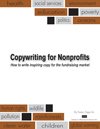Last week I wrote to you about lifting overall nonprofit email response (and ROI) through A/B testing, a welcome series, and content experimenting. Today I’ll focus on targeting so you don’t lose out on opportunities to raise more funds.
Targeting centers on relevance. Your goal is to give your nonprofit email subscribers information and stories relevant to THEIR key interests.

Collect clues for more targeted emails
How do you do that?
You’re basically collecting clues and combining them to gain insights on what subscribers want to receive.
Then deliver relevant, targeted content based on what you’ve learned through all these clues.
Clue #1 – Source of their email address. Did they provide it via the reply card in a direct mail letter? Or did they sign-up on your website or through Facebook? Or did they subscribe via a third party such as Care2, React2, or Change.org? Where and when they subscribed (e.g., in connection with a specific appeal) is a clue on how they may prefer to be communicated with and on what topic.
Clue #2 – Trigger events. Holidays, especially those relevant to your mission, are a great time to send very targeted content. For example: Memorial Day and Veterans Day are just two examples for veterans groups. Regardless of the trigger, give your subscribers a relevant experience through the content and the timing of your message.
Clue #3 – Consider the complete experience. One aspect of their complete experience with you, is using email to respond to actions in other channels. Did they get upset with something you said in a Facebook update? Or did they criticize a session at your annual conference? Include an email apology in your damage control tactics.
Also recognize that donors and members view your nonprofit as a single entity. Say your direct mail department sends out emails to support their campaigns. And your digital marketing department is also sending emails for their own campaigns. Now what if these two emails (on totally different topics) arrive in the donor’s email on the same day, or even within a day or two of each other? Bit confusing for the donor.
And the confusion is compounded by the reminder emails each department sends. Hmmm. Your subscribers are overwhelmed with messages. Not good! Someone within your nonprofit needs to keep an eye on the overall impact to subscribers. What are they receiving from your nonprofit? What’s their overall experience with your organization?
Clue #4 – What do your donors and members tell you? What topics do they respond to most often? What issues do they give most generously to? Oh, and collect information on response from all channels to improve your email targeting.
Also don’t rely solely on what donors and members “say” they’ll do in a survey, or other feedback method. Combine their “buying” actions (e.g., donations, event registrations) with their survey comments to achieve best results.
Clue #5 – What else is your data telling you? Query and analyze your database for other items ripe for targeting and personalization. Items such as . . .
◊ how long they’ve been with you
◊ location
◊ level of giving
◊ events they attend
◊ do they share your emails (i.e., use your social sharing and forward-to-a-friend features)
◊ their volunteer activity
◊ are they an evangelist for your nonprofit? Identifying this group is worth every ounce of effort you expend. Speaking to them differently can create an energy that produces exciting results. Also express your gratitude for their deep loyalty.
One more thing. Look at the entire sequence. Don’t determine how well your email performed based only on open rates and click-through-rates! The payoff comes from conversions. What did they do once your subscribers hit the landing page? Did they donate? Did they renew? In other words, did they convert?
If not, look at your landing page. Test it. Improve it. There’s a disconnect somewhere in your sequence chain. The problem may not be with the email . . . but rather, the problem that’s hurting your ROI may be with what happens after they click the email link.
Email is a most cost-effective direct marketing channel. But your ROI will steadily decline unless you pay close attention . . . unless you put in the effort to lift response. That means targeted and personalized messages backed by testing, research, and analysis. Without these efforts you’ll lose countless opportunities to acquire more donors, renew more members, and to raise more funds.
Related posts:
Example of a trigger event for email
A year-end example of a trigger event
Idea on email content withOUT an ask that cultivates and engages supporters
